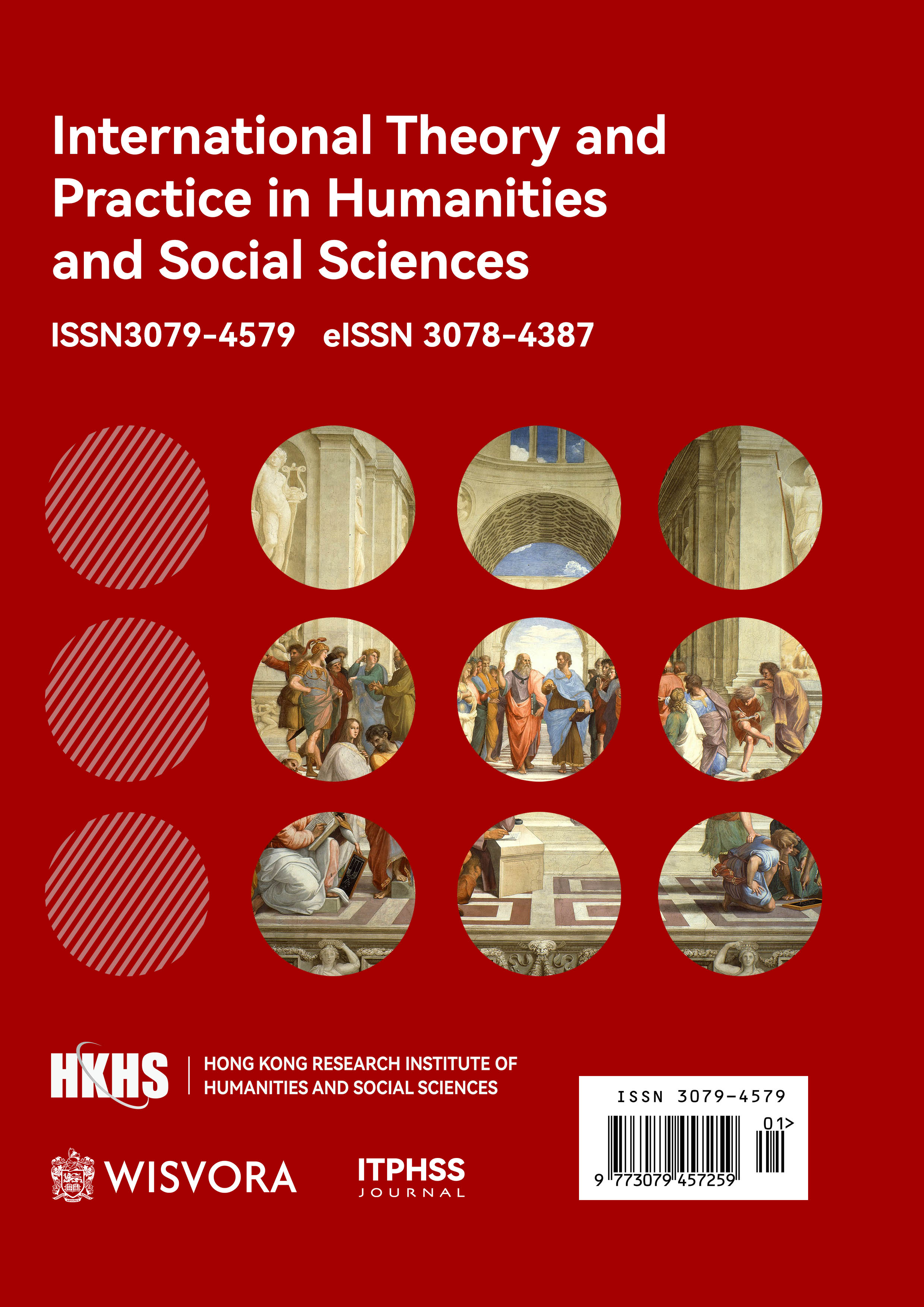Abstract
When the structure of Chinese bisyllabic words is examined by using the substitution method, three kinds of results can be obtained, namely, "morpheme+morpheme", "morpheme+syllable" and "syllable+syllable". Whether the result of "morpheme+syllable" is reasonable or not, there have been different opinions in the academic circles. In modern Chinese, morpheme refers to the smallest combination of sound and meaning, and the feature of "smallest unit" of morpheme determines that a morpheme cannot contain other independent morphemes. According to the traditional point of view, "butterfly" as a whole is regarded as a morpheme, and "蝶(dié)" of "蝴蝶(húdié,butterfly) "is also regarded as a separate morpheme, which is obviously not valid at the same time. Similarly, such a contradiction exists in the word formation of words like "苹果(píngguǒ,apple) " and "蟾蜍(chánchú,toad)" . Therefore, on the basis of the study of such special words in Chinese, this paper organises the composition forms of Chinese bisyllabic words, puts forward the principle of scientific division of morpheme composition in Chinese vocabulary, and considers a group of special syllables, such as "蝴(hú)", "螃(páng)" and so on, as a type of special affix morphemes, pointing out that "蝴(hú)" is a special class of morpheme. It is argued that a group of special syllables such as "蝴(hú)" and "螃(páng)" is a special kind of affix morpheme, and it is pointed out that the substitution method and the residual method should be combined and applied when discriminating morphemes in Chinese words.
References
Bai, J. (1992). Problems in Morpheme Identification. Journal of Hebei Normal University (Philosophy and Social Sciences Edition)(3), 5.
Bloomfield, L. (1983). An introduction to the study of language.
Chen, L. (2023). Explore whether "啤 (pí)" is a residual morpheme. Sinogram Culture(15), 15-17. doi:10.14014/j.cnki.cn11-2597/g2.2023.15.008
Ding, J. (2015). A study on the Isomorphous Substitution. JOURNAL OF LINYI UNIVERSITY, 37(4), 3. doi:10.13950/j.cnki.jlu.2015.04.025.
Feng, J. (2013). The Extraction and the Procedure of Segmentation about Chinese Morpheme. Journal of Kunming University, 35(1), 4. doi:10.14091/j.cnki.kmxyxb.2013.z1.017.
Guo, Z. (2004). A Brief Discussion about the Historical Evolution of Some Common Affixes in Chinese Language. Journal of Inner Mongolia University for Nationalities (Social Sciences)(06), 55-61.
Hornby, A. S. (2016). Oxford English Dictionary(9th ed.). Oxford: Oxford University Press.
Huang, B., & Liao, X. (1981). Morden Chinese. Beijing: Higher Education Press.
Huang, Z., & Yang, J. (1990). On the Reasons for the Disyllabification of Chinese Vocabular. Fudan Journal (Social Sciences Edition)(1), 4.
Liu, Y. (2004). Three Divergent Points of Chinese Morpheme Analysis. Chinese Language Learning(1), 6.
Liu, Z. (2001). On Remnant Morpheme. Journal of Luoyang Normal University(3), 4.doi:10.16594/j.cnki.41-1302/g4.2001.03.018.
Ren, X. (1981). Chinese word-formation. Beijing: China Social Sciences Publishing House.
Shao, J. (2016). General Theory of Modern Chinese. Shanghai: Shanghai Educational Publishing House.
Tan, H. (2012). Remnant Morphemes in Double-tone Compound Nouns of Plants in Chinese. Journal of Beijing Forestry University (Social Sciences), 11(4), 5. doi:10.13931/j.cnki.bjfuss.2012.04.017
Tao, T. (2011). On the Determination of Residual Morphemes in Chinese. Young Writers: Chinese & Foreign Arts Edition.
Wang, M. (2024). On Automatic Generation of Chinese Compound Words Based on Multi-Information Resources Applied Linguistics(04), 127-141. doi:10.16499/j.cnki.1003-5397.2024.04.007
Xing, F. (2011). Modern Chinese. Beijing: Higher Education Press.
Xu, F., & Huang, W. (2024). The Morpheme in Modern Chinese Based on Semantic Change. Journal of Xinjiang University(Philosophy and Social Sciences), 52(06), 140-145. doi:10.13568/j.cnki.issn1000-2820.2024.06.017
Yang, X., & Zhao, Y. (2019). Review of Studies on the Identification, Classification of Morphemes and Their Relationships with Grammatical Units. Journal of Anyang Normal University(03), 113-117. doi:10.16140/j.cnki.1671-5330.2019.03.028
Yao, H. (2016). Dictionary of Contemporary Chinese (7th Edition). Beijing: The Commercial Press.
Zhang, S. (2004). Thoughts on Determining Chinese Morphemes. Journal of Southwest University for Nationalities∙Humanities & Social Sciences, 25(7), 2.
Zhu, D. (1982). Lectures on Grammar. Beijing: The Commercial Press.

This work is licensed under a Creative Commons Attribution-NonCommercial 4.0 International License.
Copyright (c) 2025 Mingyang Shen, Baijia Miao (Author)


